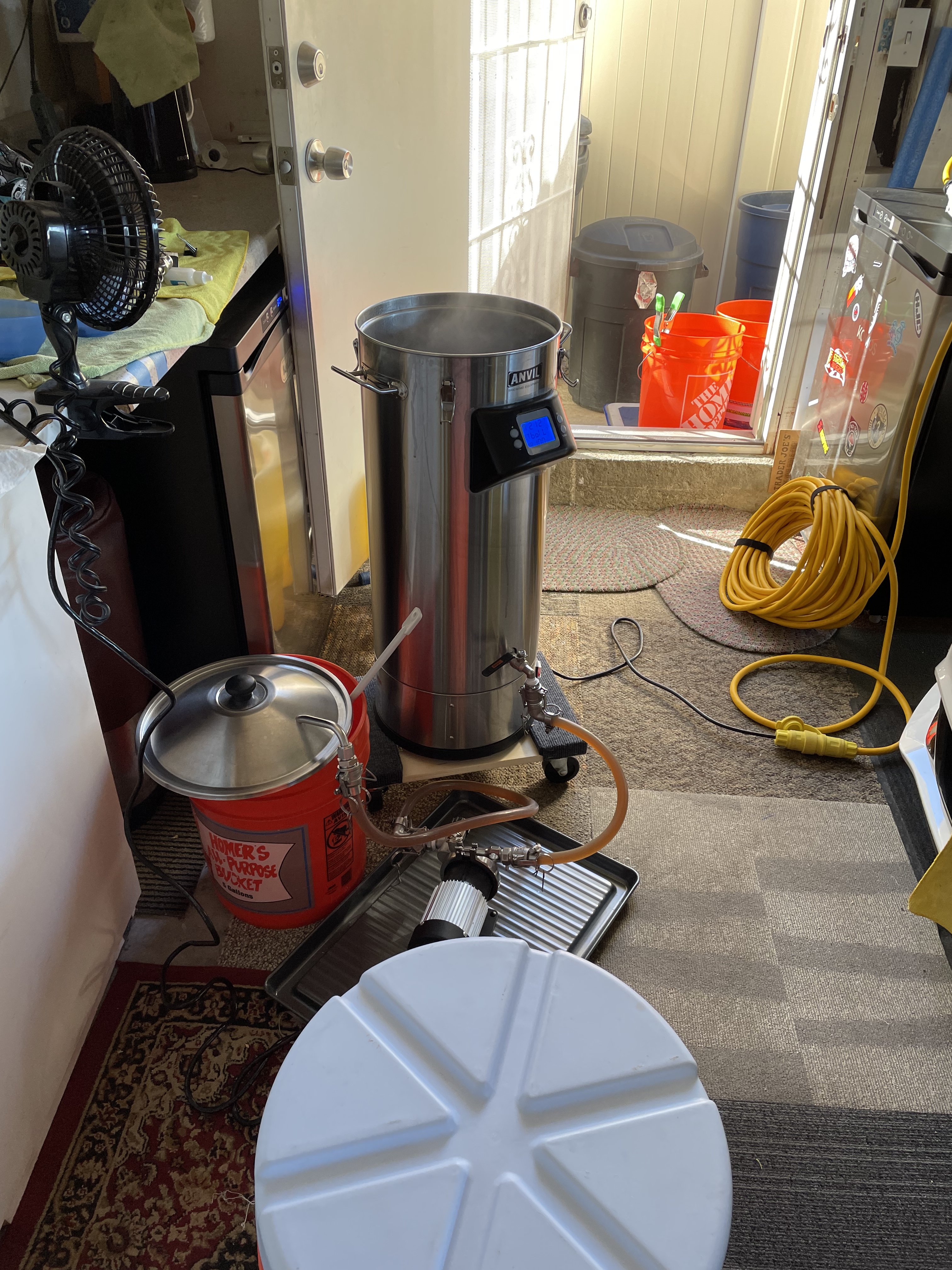I had some time this weekend and scrutinized my 6.5 Foundry dimensions as it pertained to how much water I mashed with. Thought others would be interested since much of it will apply to those and the 10.5's as well.
I've always followed the 1.25 - 1.50 qts ratio of mash water / pound of grain for many years with my propane brews, and on my first batch with the Foundry I did the same. Oops, facepalm, I could quickly tell how dry the mash was because I hadn't thought about all the dead space. Later I made some quick guesses at 3/4 gallon lost under the basket and another 10% on the sides. AI've run that way for a year or so but looking at it more carefully it turns out I'd undershot both of those as well.
The volume under my grain basket and I presume pretty much any other grain basket was 0.97 gallons, which can reasonably be rounded off to "1 gallon".
The volume around the sides of the basket was surprisingly about 30% there. I measured 11-5/8" diameter for the kettle and 9.75 for the basket. Running the math said the inside of the basket was about 70% of the total cross sectional area leaving of course 30% on the outside. It's more than it seems at a glance. The dimensions are rounded a little and don't accommodate for the thickness of the basket wall and so on, so not ultra precise, but very much in the ballpark I believe.
So to decide how much water is really needed to hit that sort of ratio, my new process is:
1) Pick a number, let's say 1.25, for the ratio
2) Multiply it by grain weight (for example, 6 lbs grain in a 6.5 Foundry for a 2.5 gallon Pale Ale would need 1.25 x 6 = 7.5 qts of water)
3) Account for additional water outside the sides of the basket to actually have that volume on the inside (7.5 qts plus another 7.5 times 1 over 70% or put differently 7.5 / 0.70 = 10.7 qts)
4) Add the gallon underneath (10.7 + 4 = 14.7 qts)
So with my example above I don't need 7.5 qts of water for that ratio, I need actually almost double, 14.7, to actually get me where I want.
Lots to hope for here - that it made sense, it helped someone, and that I didn't fudge it up along the way.
It's about to make me ditch the basket and go with a bag, that's for sure.





















![Craft A Brew - Safale BE-256 Yeast - Fermentis - Belgian Ale Dry Yeast - For Belgian & Strong Ales - Ingredients for Home Brewing - Beer Making Supplies - [3 Pack]](https://m.media-amazon.com/images/I/51bcKEwQmWL._SL500_.jpg)



























